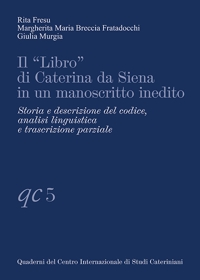Felice Palma. Massa 1583-1625. Collezione / Collection.
Testi di Andrei Cristina, Ciarlo Nicola, Federici Fabrizio, Claudio Casini e Sara Ragni.
Testo Italiano e Inglese.
Pontedera, 2024; ril. in cofanetto, pp. 289, ill. b/n e col., tavv. b/n e col., cm 24,5x34.
(L'Oro Bianco. Straordinari Dimenticati. The White Gold Forgotten Masters).
prezzo di copertina: € 160.00
|
Libri compresi nell'offerta:
Felice Palma. Massa 1583-1625. Collezione / Collection.
Testi di Andrei Cristina, Ciarlo Nicola, Federici Fabrizio, Claudio Casini e Sara Ragni.
Testo Italiano e Inglese.
Pontedera, 2024; ril. in cofanetto, pp. 289, ill. b/n e col., tavv. b/n e col., cm 24,5x34.
(L'Oro Bianco. Straordinari Dimenticati. The White Gold Forgotten Masters).
OMAGGIO (prezzo di copertina: € 160.00)
Le botteghe del marmo
Testo Italiano e Inglese.
Ospedaletto, 1992; ril., pp. 153, 10 ill. b/n, 60 ill. col., cm 24x29.
(Immagine).
OMAGGIO (prezzo di copertina: € 34.49)
Museo Stefano Bardini. I Bronzetti e gli Oggetti d'Uso in Bronzo
A cura di Nesi A.
Firenze, 2009; br., pp. 191, 102 ill. b/n, 7 ill. col., cm 17x24,5.
(Museo Stefano Bardini).
OMAGGIO (prezzo di copertina: € 30.00)
Bronzetti e Rilievi dal XV al XVIII Secolo
Bologna, 2015; 2 voll., ril. in cofanetto, pp. 729, ill., tavv. col., cm 21,5x30,5.
OMAGGIO (prezzo di copertina: € 90.00)
Palazzo Margherita. Site of the embassy of the United States of America to the Italian Republic, Rome
Gangemi Editore
A cura di Brunori V.
Testo Inglese.
Roma, 2003; br., pp. 96, ill. col., cm 22x24.
(Arti Visive, Architettura e Urbanistica).
collana: Arti Visive, Architettura e Urbanistica
ISBN: 88-492-0392-6 - EAN13: 9788849203929
Soggetto: Architettura e Arte Civile,Collezioni,Pittura,Saggi (Arte o Architettura),Scultura
Periodo: 1400-1800 (XV-XVIII) Rinascimento
Luoghi: Roma
Testo in: 
Peso: 0.41 kg
There are many joys in serving as the American Ambassador to Italy, but working every day in the beautiful Palazzo Margherita is surely among the most welcome. This building, which has been the American Embassy for close to sixty years, is more than the center for our many diplomatic activities in Italy; it is also a symbol of America's enduring friendship with Italy and its people.
In this booklet you will read of the history of these grounds and buildings, a chronicle that goes back to Julius Caesar, who had his summer palace here and where, it is said, he entertained Cleopatra. Beginning in the Middle Ages, continuing during the Renaissance, and ending in the early years of the last century, prominent Roman families occupied these grounds in their various houses and palaces. Finally, in the early years of the 20th century, the widowed Queen Margherita, who gave her name to the current building, took up residence here.
The booklet will also tell you something of the art that the Embassy and its grounds contain: paintings and architectural details, furniture and fountains, and, most notably, sculptures. Among these sculptures, which include statues from Imperial Roman times, is Giambologna's Venus. Visible from the street and softly illuminated at night, this masterpiece has come to define the American Embassy for the people of Rome, who see it as they walk along the storied Via Veneto.
We at the Embassy take seriously our responsibilities to preserve and enhance the artistic patrimony that is in our care, whether in the form of the buildings, their adornments, or the exquisite gardens and fountains. We thank you for visiting and hope that this small publication helps you to understand more fully the history and the treasures of the American diplomatic mission in Rome.
Wirth Oswald € 14.25
€ 15.00 -5 %
Marco Cassini € 14.25
€ 15.00 -5 %
Quante strade. Bob Dylan e il mezzo secolo di «Blowin'in the wind»
Incantevole Puglia. Fra arte, storia e natura. [Edizione Italiana e Inglese]

Archeologia a Pietrabbondante. Vol. 2: Ricerche e studi 2010-2022
Cavalli indomabili. Delio Cantimori e le ideologie del Novecento
X Seminario della Scuola di Dottorato in Archeologia (SSDA 2023)
Un triangolo per la libertà. La riconquista dell'Umbria nel 1860

























![Incantevole Puglia. Fra arte, storia e natura. [Edizione Italiana e Inglese]](https://immagini.libroco.it/copertine/IMMAGINI/3073/m-1536619.jpg)





























